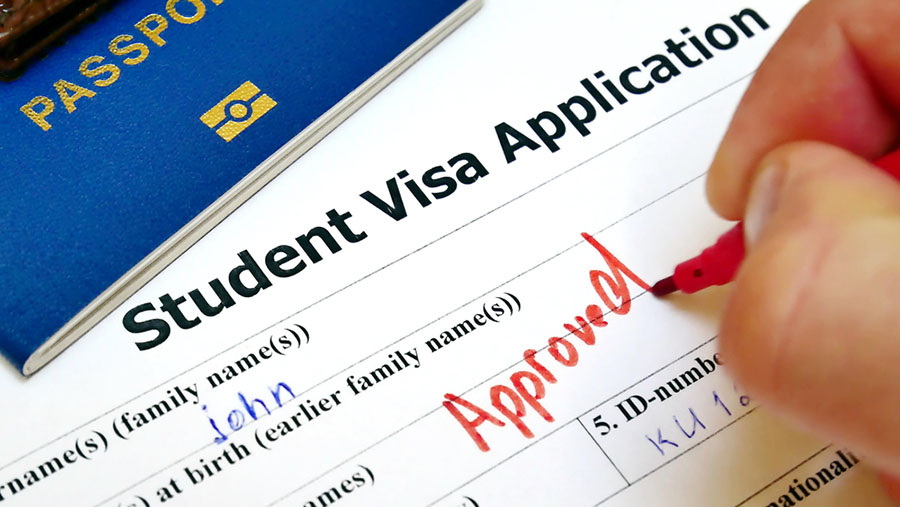Living in Tokyo as Students
A Step-by-Step Guide to Applying for a Japanese Student Visa.

Starting your life as an international student in Japan should be hassle-free. AND legitimate. That is why you need to apply for a mid to long-term resident status AND a student visa if you intend to live and study in the country for more than 90 days.
Sounds daunting? Don’t fret! This article will guide you through the process for starting your student life at an academic institution in Japan. In addition, we’ll also touch on the process for taking part-time jobs.
Eligibility Check

First and foremost, choose the school/institution you wish to attend. The Japanese authority will then assess whether you are eligible for a medium or long-term residency. The process starts with the application for a Certificate of Eligibility (COE), in accordance with the Immigration Control and Refugee Recognition Act (the Immigration Control Act). The application may be submitted by either the applicant him/herself, or by the institution at which the applicant is enrolled at or is intending to work. If you are applying for a visa to study in Japan, the academic institution at which you are enrolled at typically apply for a COE to the Immigration Bureau of Japan on your behalf. For instance, if you are first coming to Japan to learn the language, the language school should apply for your COE as proxy. The application for the COE is a vital process during which the immigration authorities determine whether the applicant’s intended residence status in Japan is not only lawful but also in line with the pre-requisite landing criteria. Once issued by the Japanese Minister of Justice, the COE serves as a proof that your visa application conditions are met, and should you apply for a visa while the COE is valid, your application will be fast-tracked.
Be sure to that your COE application is submitted well in advance - having the COE issued typically takes one to three months, plus getting it posted to you requires additional number of days or weeks. The institution will generally advise you of the documents and information it needed in order to submit your COE application at the time you enroll for the course.
The documents required include:
- An application form completed accurately by the applicant;
- Letter of Guarantee;
- A copy of the relevant pages from the applicant’s passport;
- Passport-sized photos of the applicant;
- Supporting documents establishing the applicant’s personal background, academic certificates, and financial viability indicating that the applicant could sustain his/her living expenses while in Japan.
Once COE is issued and your resident status established, you will be issued a residence card upon entry. The residence card is not only a proof of your legality but also serves as your identification document during your stay. The first stage of starting your life in Japan like opening a bank account or renting a room would be less troublesome by indicating your residence card.
Note that a COE is not required if you are entering the country under a Temporary Visitor Status. Entering the country under the Temporary Visitor Status will be automatically granted from 15 days up to 90 days by a border control officer upon arrival. As the name indicates, this visa is for temporary uses only such as for leisure, sightseeing, visiting friends or relatives, attending conferences, or for short-term, non-profit commercial activities.
Alternatively, you can apply for a visa in advance on the condition of a short-term stay to the Japanese embassy or consulate in your country. This can be arranged by submitting documentation such as an invitation letter or a letter of guarantor from the institution you are visiting.
You can find more details from the Immigration Bureau of Japan website:
http://www.immi-moj.go.jp/english/tetuduki/kanri/shyorui/01.html
Student Visa Application

Once you receive your COE, schedule a visit to your local Japanese embassy or consulate for the actual visa application. Validity of a COE is three months from its issuance. If you do not apply for a visa within that period, the COE will become invalid and you will have to start the process all over again. Check the documents which need to be submitted to the embassy/consulate, including your COE, your passport that is valid throughout your scheduled stay in Japan, and a letter of acceptance from the institution. Be sure to have these documents ready and complete any necessary forms accurately before your scheduled visit. If this is your first time to leave the country and to obtain a passport, do take into account of the processing times for the issuance of passport.
With a bona fide COE in place, the process of obtaining your visa should be handled swiftly, generally around 3 to 7 days. Just be sure when planning your itinerary to arrive in Japan AFTER the visa is issued; once you’re in Japan you cannot apply for the visa. By indicating the COE together with your student visa stamped on your passport, the immigration officer should grant you landing permission without grilling with you questions and your immigration should be processed rapidly and efficiently at the port of entry.
For reference, student visas fall under “Designated Activities”.
See the following link for details:
https://www.mofa.go.jp/j_info/visit/visa/system/index.phps
How to work part-time

Now that you’ve settled in and find juggling your time between study and life a piece of cake, you might be considering taking on more challenges to broaden your horizons, and maybe even earn some extra cash from part-time jobs, such as shop keeping at convenience stores or helping out at restaurants. Here in Japan a student visa does not automatically grant you the eligibility to work. What do you do? The process is rather simple. You can apply for permission to engage in activities beyond that of your current visa by submitting the necessary documents to your local immigration bureau. What’s more, it costs you nothing for this whole process!
Here is the list of required documents for the ”Application for Permission to Engage in an Activity Other Than That Permitted by the Status of Residence Previously Granted”:
- An application form;
- A document evidencing the intended activity;
- A copy of the applicant’s passport and residence card
Typical processing times can be from two weeks to two months.
Some words of advice. It is imperative to obtain permission before taking on any sort of part-time job involving remuneration. If you are found working without permission, including while your application is processing, you will be faced with severe consequences for breaching the Immigration Control Act. Furthermore, permission to work comes with a cap on your working hours – that is, 28 hours per week during the semester, and 8 hours per day/40 hours per week during semester breaks. If you violate the arrangements, not only would you be in trouble and potentially face deportation, but your employer may also face charges. Besides, such news may also bring down the reputation of your institution, and officials may revoke the ability of your institution to accept international students. So if you want to play safe, please abide by the rules – it’s better to be safe than sorry.
See the following link for more details:
http://www.immi-moj.go.jp/english/tetuduki/kanri/shyorui/09.html
Immigration rules and visa requirements change from time to time so make sure to stay on top of things by checking the latest movements.